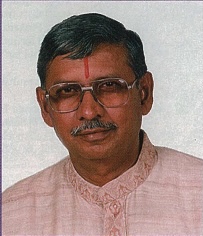BY PANDIT RAJENDRA SHARMA
Temple trustees are often disappointed in the lack of youth participation. I think our experience here at the Hindu Worship Society in Houston, Texas, may be useful. When I was asked to be the priest here, the trustees said the Mandir’s goal was to promote our young and encourage them to take responsibilities for the Mandir’s daily operations. They gave me the names of the youths on the management committee. Except for one, none showed any interest in the operation and were hardly present on any puja days. So I personally inquired of each youth about their lack of interest. One answer, among others, was, “The older people have no faith in our abilities and judgments,” hence their non-interest. I called a youth meeting and explained that they are the backbone of our religion and culture. I promised to ensure their judgment would be honored and appreciated.
I sat with the trustees and chalked out the youths’ responsibilities: “The youth will organize all festivities at the Mandir and at any other venue. If they need assistance and advice, the elders will oblige.” Some elders were hesitant, but with insistence and the chairman’s support, we convinced the trustees, reminding them that our constitution specifies that youth (teens to age thirty) are to administer the activities. I made a pact with youth to attend their secular activities, and they were to attend all Mandir activities. I initiated regular dialogue between the elders and the youth. We started playing volleyball and other games with them. They started calling their friends. All would come to Mandir on Sundays. After handling the prayer service, accounts and other business, they would then become involved in their personal activities.
The point I would like to stress here is the lack of faith in our youth by our elders. Once I went to do a prayer service at a devotee’s house. I requested a young girl to make me some panchamrit (special fruit and honey offering). One of the aunti’s got up and said, “Panditji, this child does not know how to prepare it, so, I will make it for you.” I stopped her and requested the young lady to prepare the panchamrit. I did tell her which ingredients to use. I also told the parents present that by doing everything ourselves we are harming the youth. I reminded them then and still now of the varnashram dharma (duties pertinent to position and age in life) which Manuji Maharaj has explained in his Dharma Shastras: that the old retire and sit back and guide the young. Only then will there be a peaceful and progressive society.
Today our young eagerly work for the Mandir. We invested in them and today we reap the rewards. Of course, the older generations are always close by to assist when the need arises.
Regarding our youths’ lack of interest in ritual worship or religious lectures, I would say that we have to change our preaching methods, especially language usage. Historically, when the divine Sanskrit of our scriptures became the language of the scholars, beyond the common understanding, the Puranas were written in understandable common language in order to maintain the practice of dharma. Likewise, to maintain the interest of the youth, priests should employ terminologies that youth in a modern world can understand.
And we must understand our youth. One day while the parents were in a worship service, the children were in the next room looking for something to get into. We asked them a simple question, “Are you proud to be a Hindu?” They answered “Yes,” with no enthusiasm, perhaps out of fear of consequences. So we posed another question, “Why are you proud to be a Hindu?” Their replies were extremely vague, and they finally stated, “We do not understand our religion and culture.” Next we asked, “Would you like to learn about your religion and culture?” The reply was an enthusiastic, “Yes!” accompanied by an anticipatory interest on all of their faces. The door to learning was now unlocked.
To be proud of anything, one must know and understand it. Our youth activities here are based on this premise. All the youth have the opportunity to tell you what they know or think about their religion and culture and open a dialogue. Not only do we talk about religion, we discuss ways to apply it to our daily life at school, at play and at Temple. We put it all together and make it work–“A way of life.” We also allow the young students to choose what they want to talk about. On all religious occasions we give them religious literature such as the Bhagavad Gita, Dancing with Siva, Hinduism’s Contemporary Catechism and copies of this magazine, Hinduism Today, so they may read and learn. As teachers, it is our duty to motivate and guide the students–key word, guide.
Five simple steps which have worked for us here at Hindu Worship Society are: 1. Listen to our youth; 2. Find out what they know and how much they know; 3. Let the youth be involved in the process; 4. As a teacher guide you should really know your subject and understand it yourself, and be able to communicate to all at any level; 5. Sit down and talk with youth on their level. Understanding is the key to success. Our youth are so motivated and devoted in Mandir activities that they call their friends and even compel their parents to take active part in the progress of dharma.
PANDIT RAJENDRA SHARMA, priest of the Hindu Worship Society, Houston, Texas, is a third generation Fijian-born Hindu, trained by Sri Jagdish Shukla of Bharatiya Vidya Bhavan, Mumbai, India. His wife, Asha, was born to a Romany family in America, whose ancient ancestors came from India. Together they perform a dynamic Hindu ministry in a contemporary social context.


